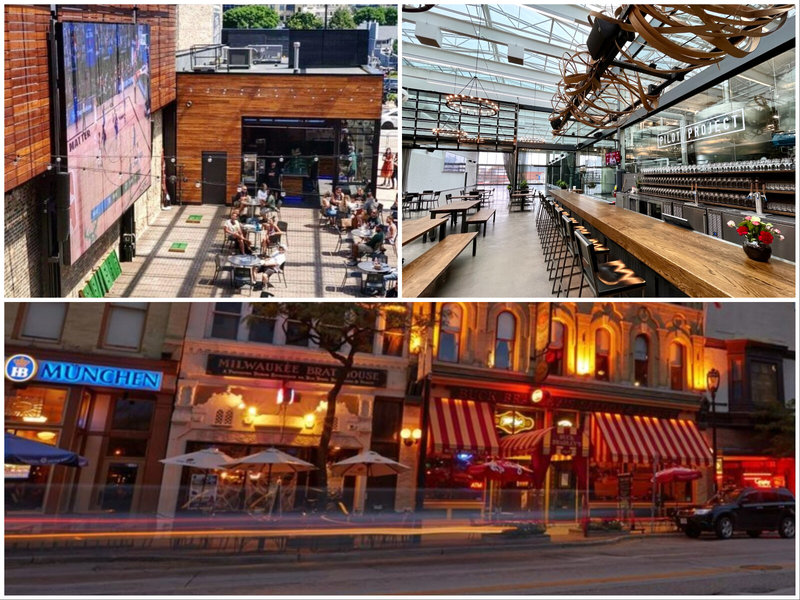In honor of the Bucks' playoff run, we're re-sharing this story – posted last autumn – about the backstory on the team's Cream City jerseys. Go Bucks!
With the Bucks releasing new Cream City-themed uniforms and the Brewers moving to a cream-colored home jersey, it occurred to us that perhaps no one outside Milwaukee even understands the relevance of the term. In fact, with each passing year, it’s possible that fewer and fewer Brew City folks even get it anymore.
Despite that fact that Wisconsin is America’s Dairyland, the cream in Cream City has nothing to do with cows or milk.
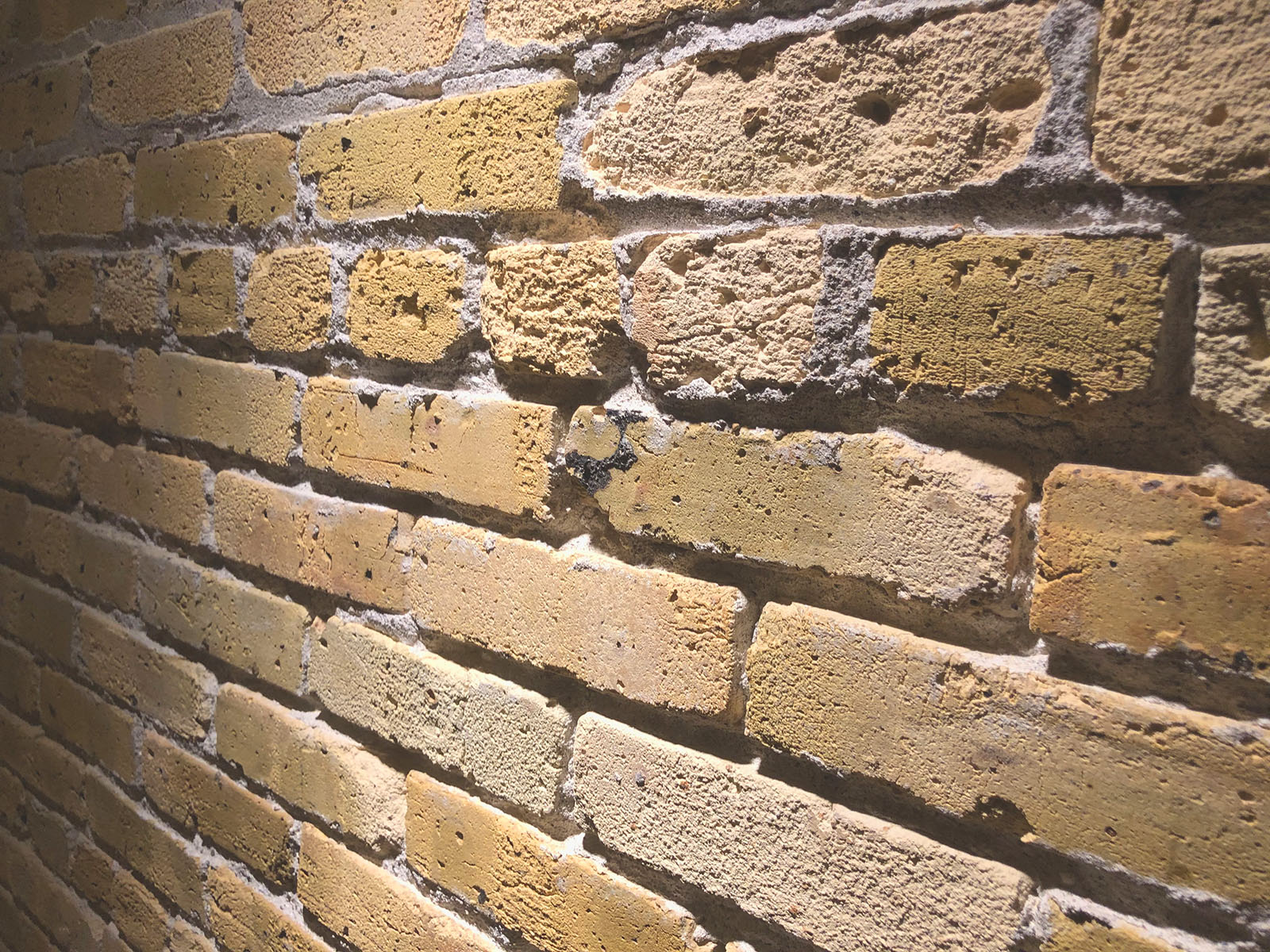
Instead, it’s a longstanding reference – dating to the 19th century – to the color of the bricks manufactured as early as the 1830s by brickmakers like brothers George and Jonathan Burnham in the Menomonee Valley (see 1867 ad at right), and Fowle and Wells in Oak Creek, among others around the area.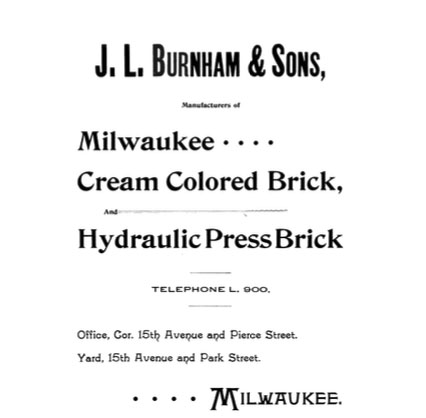
Instead of a more typical reddish color, these bricks were pale yellow. Made from a glacial red lacustrine clay dug from area riverbeds, the bricks turned yellow during firing as calcium and magnesium counteracted the iron that produced red coloring.
As anyone who has looked closely can attest, Cream City bricks come in a wide variety of shades.
In Wisconsin, we take these beautiful building blocks for granted, finding them at every turn – including at the former Schlitz, Blatz and Pabst Breweries and at the current Miller Brewery, too. We seem them at former tied house bars, vintage public schoolhouses, firehouses, gorgeous 19th century mansions and landmarks like Turner Hall.
Others took notice, too, and dubbed Milwaukee the Cream City for its distinctive yellow brick buildings that were quite fashionable and led others to order the brick from afar. In addition to buildings in Chicago, Minneapolis, Dubuque, Detroit, Cleveland, New York, Buffalo and other cities across the United States, some buildings as far-flung as Hamburg, Germany were also reportedly constructed of brick from the Cream City.
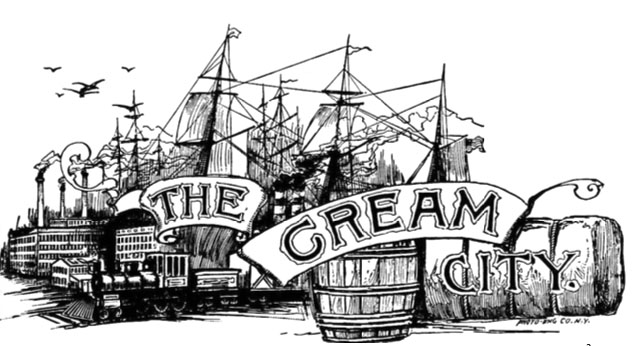
An ornamental title from a late 19th century Milwaukee souvenir book,
reprinted in H. Russell Zimmermann's "The Heritage Guidebook."
Though it’s unclear exactly when the term first came into parlance, Andrew Stern wrote in his 2015 thesis, "Cream City: The Brick That Made Milwaukee Famous":
"Already by the time Milwaukee incorporated in 1846, the city’s reputation as the ‘city of bricks’ was being noticed. The ubiquitous cream-brick earned the city titles such as the ‘Fair City of the West,’ ‘Cream White City of the Unsalted Seas,’ and ‘Cream City of the Lakes.’ By the 1860s Milwaukee settled upon its most recognized moniker as the ‘Cream City.'
"It is not clear exactly when the stand-alone ‘Cream City’ name was first applied to the city. The earliest precursor located comes from an 1849 article referring to the ‘city of cream-colored brick.’ The Rock County Badger newspaper the following year wrote similarly of a ‘beautiful city of cream hued brick.’ Both the ‘Cream City of the Lakes’ and ‘Cream City of the West’ were commonly bestowed names by the 1850s, as was the longer ‘Cream City of the Unsalted Seas.’ The slightly shorter ‘Cream Colored City’ was used to describe Milwaukee in 1857. Finally arriving at a shorter derivation, ‘Cream City,’ seems like an obvious conclusion."
In 1846, according to the Encyclopedia of Milwaukee, a New York journalist commented on the bricks, calling them one of the city’s "remarkable features."
The first commercial reference to the name appears to be around 1860 with Cream City Extra Flour. Two years later, a Milwaukee Sentinel article refers to a boat already bearing that name that traveled the Great Lakes, carrying its name to other locales.
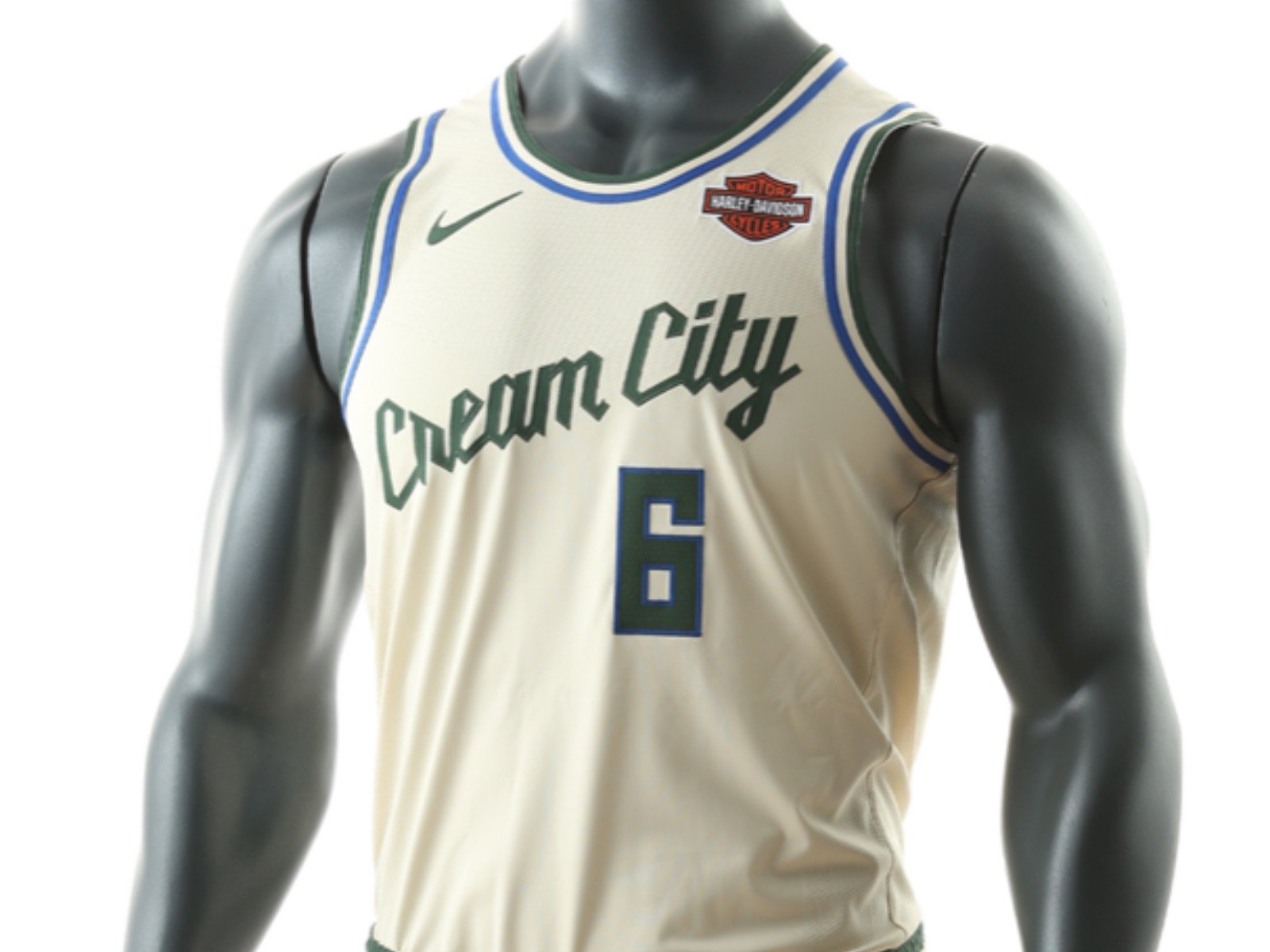
Milwaukeeans organized a Cream City Base Ball Club in 1865, which played teams from Chicago, Rockford, Madison, Janesville and Beloit, but also Cincinnati and even Brooklyn, further helping to spread the nickname far and wide.
Long after production of Cream City brick ceased around 1929, the brick remains ubiquitous in Milwaukee and in our self-image. Like the soft but durable brick from which the name derives, Cream City has endured as a Milwaukee moniker, too.
Born in Brooklyn, N.Y., where he lived until he was 17, Bobby received his BA-Mass Communications from UWM in 1989 and has lived in Walker's Point, Bay View, Enderis Park, South Milwaukee and on the East Side.
He has published three non-fiction books in Italy – including one about an event in Milwaukee history, which was published in the U.S. in autumn 2010. Four more books, all about Milwaukee, have been published by The History Press.
With his most recent band, The Yell Leaders, Bobby released four LPs and had a songs featured in episodes of TV's "Party of Five" and "Dawson's Creek," and films in Japan, South America and the U.S. The Yell Leaders were named the best unsigned band in their region by VH-1 as part of its Rock Across America 1998 Tour. Most recently, the band contributed tracks to a UK vinyl/CD tribute to the Redskins and collaborated on a track with Italian novelist Enrico Remmert.
He's produced three installments of the "OMCD" series of local music compilations for OnMilwaukee.com and in 2007 produced a CD of Italian music and poetry.
In 2005, he was awarded the City of Asti's (Italy) Journalism Prize for his work focusing on that area. He has also won awards from the Milwaukee Press Club.
He has be heard on 88Nine Radio Milwaukee talking about his "Urban Spelunking" series of stories, in that station's most popular podcast.





